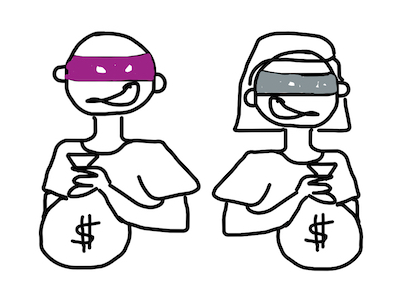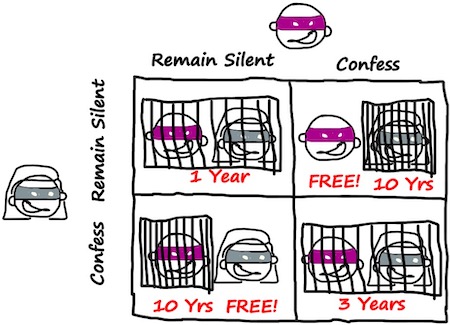The misadventures of Purple and Gray
a.k.a The Prisoners Dilemma
One of the popular examples of Game Theory is the Prisoners Dilemma, a form of Cooperative Equilibrium. The premise of this game is as follows.
Two individuals, Purple and Gray, team up to rob a bank. As they attempt to make their getaway they are caught by the police. Following a strategy of standard police procedure Purple and Gray are placed into separate interrogation rooms.

Purple and Gray are offered the same opportunity, which goes something like this.
The police don’t have enough to convict either Purple or Gray with robbing the bank as they can’t recover the money. But they can get them on a lesser charge. The police set up four scenarios for Purple and Gray.
- If Purple and Gray both remain silent and plead innocent, then they could potentially face 1 year in prison on the lesser charge.
- Purple is given a chance to make a deal if they turn on their partner Gray. The deal is to confess and serve no prison time. Gray will face ten years in prison if they remain silent. The police also inform Purple that Gray is getting the same deal.
- Gray is also given a chance to make a deal if they turn on their partner Purple. The deal is to confess and serve no prison time. Purple will face ten years in prison if they remain silent. The police also inform Gray that Purple is getting the same deal.
- If Purple and Gray both confess thinking the other one will betray, then they will both get three years prison time.
At a glance the best scenario is that both should remain silent. However human nature and behavioral science is at play here. Both individuals will want to optimize their predicament and get the best outcome for themselves. The police know this so they set up the game to force one or both to betray each other in the spirit of self-interest. As Sherlock Holmes famously declared, “The game is afoot.”
What would you do in this situation?
